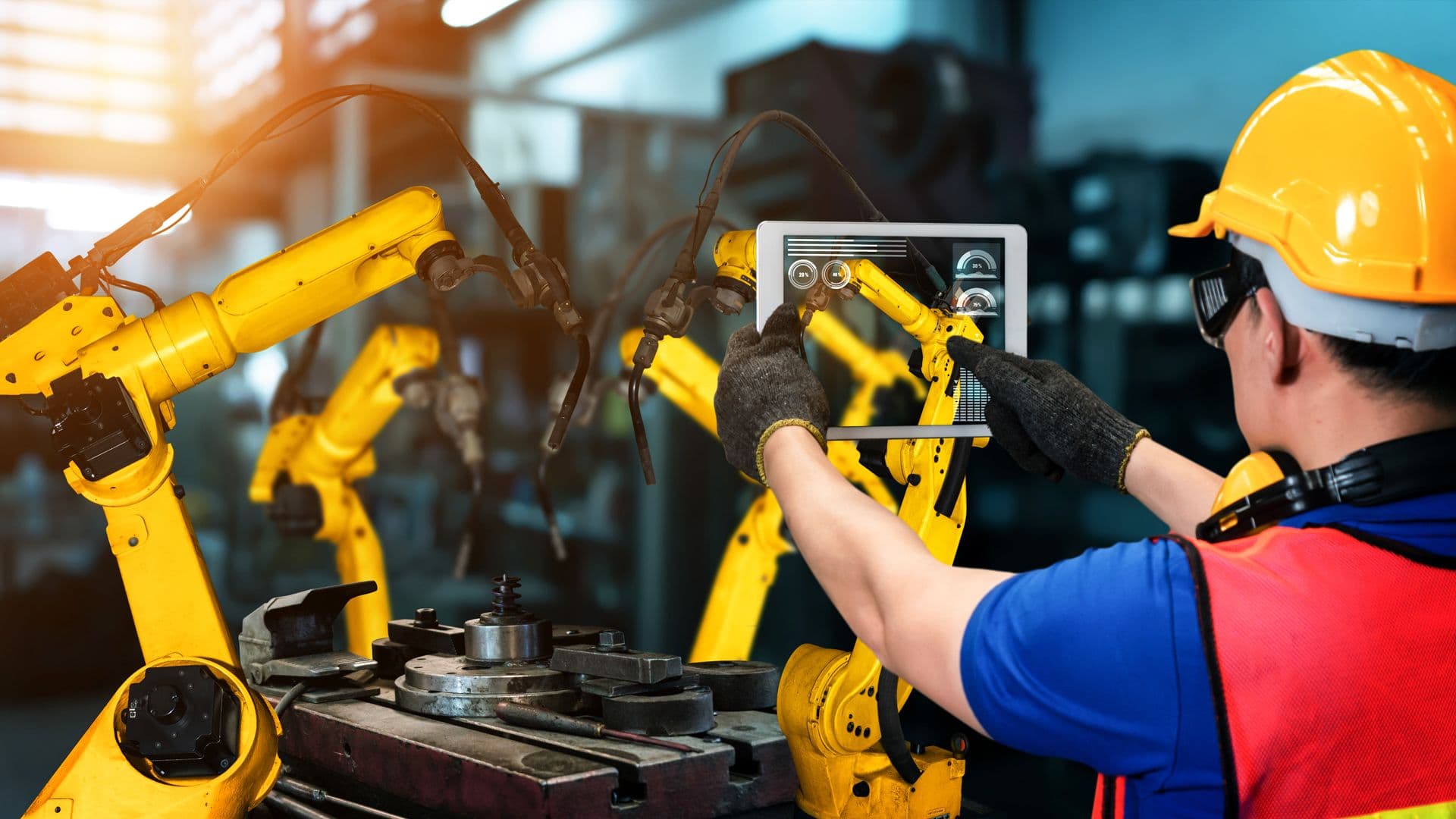Our phones can now do more than supercomputers could in the past due to ‘smart’ technology. Your manufacturing business should be at least that ‘smart’. Not only ‘should’ your manufacturing be smart—it needs to be to beat your competition.
Before you break a sweat thinking about it…it may be easier than you think. With a solid plan in place you can tackle this and become competitive in your industry due to the data it brings you, costs it lowers (after initial implementation costs), and power it gives your sales teams, executives and other employees. Breaking it down into steps can help you create a plan simply and effectively. In this article we will look at the following steps (which are detailed below):
- Benchmarking your current status
- Understanding monitoring
- Leveraging sensor-data management techniques
- Looking at connectivity
- Asset management for a smart environment
- Regulatory compliance (and how it can help)
- Digital architecture and Security
Once you have your smart solution securely in place, you will also need to look at elements such as training your employees to not only use it—but understand how it works and why it is important. Higher-level employees may need hands-on training during the implementation, but digital work instructions will be important as a wider strategy during this stage that occurs just before and after your smart manufacturing roll out.
You will also want to keep in mind what type of systems you are integrating the smart manufacturing technology with. For example, if you have an ERP, you’ll need an Enterprise-grade solution that integrates with that technology.
1. Benchmark Your Current Status within Smart Manufacturing
Becoming a smart manufacturer isn’t a small task by any means. When you break it down into small, actionable chunks however it becomes practical. The first step is to assess your current environment.
How many sensors are running in your environment currently? Are they active or they need to be activated? Are machines without sensors able to be retrofitted to include them in your data? What data have you collected? These questions are critical to begin your transition. If all your machinery has sensors already—fantastic. But an important question is, can you retrieve previous data to help guide you in the beginning stages?
Another critical point in assessing your place on the smart-manufacturing continuum is to compare it to your competitors. This information may be harder to come by, but if you know where you rank this will not only help your process but also motivate anyone in your organization that needs convincing. To be competitive—or better yet, beat your competition—you need to be smarter than them.
2. Understand How to Monitor for Improvement
The first step to a smart manufacturing environment is data—you need to capture as much of it as you can. With the increasing rate of the IoT (Internet of Things), you can now monitor almost everything via sensors. With the sensors that most machinery is equipped with (or can be modified to include in some cases) you can monitor: operating temperature, speed, weights, operational failures, changes in operations, the movement of objects, the status of valves and more.
This smart data is critical to things like identifying inefficiencies, decreasing downtime (by anticipating repairs and part replacement), reducing energy costs, and monitoring employee output. But before you can benefit…you have to collect, monitor, analyze and manage the data. This takes not only the right software, but point people in your organization (or an outside consultant) to be dedicated to the project. For monitoring that turns into actionable reporting you will need a Professional-grade solution.
3. Manage Sensor Data
Collecting the data and monitoring are the first steps—the next is to manage that data. You need to collect the data into a system that manages elements such as:
- Context: You need to sort data via elements such as time stamps, GPS coordinates, temperature/weather, etc. This will give you a 360-view of your environment in context that can be leveraged.
- Importance: You will be collecting thousands (if not hundreds of thousands or millions) pieces of data. You need to manage that data by determining and managing the most important/relevant information to your business and current goals. You should create a list of your top goals/priorities with becoming a smart manufacturer, then work that down into the sensor data that will help you accomplish that.
- Raw Data Aggregation, Analyzation and Action: Raw data is important, but without compiling, sorting and analyzing it—it won’t help you. Specifically, you need to look for anomalies that you can turn into action items. Bonus points if anomalies are automatically triggered into an action item.
How you treat your data will make or break your solution. You need to figure out if your data will be automatically analyzed and turned into an automated result—or whether you will have a point person or team turn the anomalies the system notifies them of into a result.
4. Connect Your Sensors
Individual sensors are great but the current trend in manufacturing smart technology is to have those sensors interconnected. When one machine, element of a machine or piece of technology can interact in terms of data with another, your data turns from a simple piece of raw data into a truly 360-degree view of your organization.
For example, reading temperature data across the different pieces of a machine and other machines linked in the manufacturing process, means you can monitor temperatures globally. Learn more about connectivity here.
5. Manage Your Assets
Any assets not nailed down or are pieces of machinery that weigh three tons can be tracked via IoT sensors enabled with GPS tracking. This is especially important for elements such as handheld devices, vehicles, inventory, parts and even people.
Not only can you track location (for GPS-enabled sensors), you can get real-time data about when assets come in, where they are in the manufacturing process and when they leave warehouses and distribution centers. This real-time data can empower your sales teams, managers and executives to better predict flow and to better inform clients.
In addition to better tracking and traceability, it enables you to ensure that you have the assets available to fulfill orders. When this information is put into an automated ordering system—wow.
6. Comply with Regulations
Compliance is often one of the most difficult elements of manufacturing—specifically proving it. While each industry’s compliance is unique, the two most common ones are regulatory and environmental compliance. Once you have your data stream setup and analyzed, you need to implement your strategy for compliance.
Environmental compliance is accomplished by monitoring elements such as temperature, run times, overall output, and machine output in terms of things such as exhausts, oil use, etc. Regulatory compliance for quality control can be accomplished by showing stable data and numbers across the board.
7. Focus on Digital Architecture & Cyber Security
Once your sensors are transmitting raw data to your software and team—this becomes an important digital architecture and cyber security issue. You need cyber security architecture that protects that data.

Step one is to map your data
You will have a massive amount of data coming in, and you need to coordinate it. An important part of this is coordinating (aka mapping) the entry and exit points.
For example, exit points can be machinery, portable devices or a terminal exiting the factory due to servicing, repair or decommissioning, or via employees extracting data via something like a USB device or software-connected smartphone. Both of those are important security elements you need to track/map/coordinate the data from.
Step two is to secure your data network
A piece of machinery or portable device may not seem at the surface as a digital security threat—but you’d be surprised. It is rare that things are plugged in to upload viruses or denial of service (DoS) attacks in some sort of Hollywood-inspired corporate conspiracy…but they do happen. A primary point of security is securing all internet-enabled devices—which these days is almost everything (from a multi-million-dollar machine to a small handheld device).
Without the right security you will be left open to DoS attacks, malware, viruses and other forms of device vulnerabilities. All of these devices need software security, and to be monitored regularly by your IT department. While this may sound daunting and expensive, a dollar in preventive care is worth a hundred in post-attack remediation.
This will require firewalls, encryption, overall security software, monitoring, authentication, and intrusion detection. If your IT department isn’t capable of doing so (often due to funding and staffing—not innate ability per se) then you need to hire an IT consultant to setup the security system for you.
Step three is to limit the amount of devices that need secure protection
Trimming down the amount of devices that need digital security will not only make you significantly more secure but also reduce the IT budget that needs to be allocated to do so.
Step four is upkeep
Creating a secure network is critical, but that won’t help you if you aren’t able to role out security patches and software updates as needed. You will need to talk with your IT department about what that entails, how often it needs to be done and any potential downtime related to it so you can schedule it optimally.
Step five is to prepare for your best but plan for the worst
You need a contingency plan in place should there be any compromises. Having this plan in place will help you react quicker, but also minimize data loss and downtime.
Leveraging the IoT to turn your manufacturing business into a modern marvel that is ultra competitive takes the seven steps noted above. This needs to be combined with at least one point person to plan and supervise the rollout, support of your IT department and worker training (although this is often just higher-level employees in terms of training, as employees performing simpler functions can learn via digital work instructions). It may seem intensive however when you break it down into the actionable chunks above it is very manageable.
Becoming a smart manufacturer will empower your high-level teams to pivot more quickly, save you significant money over the long term, help you track your assets, improve your overall workflows and more.


